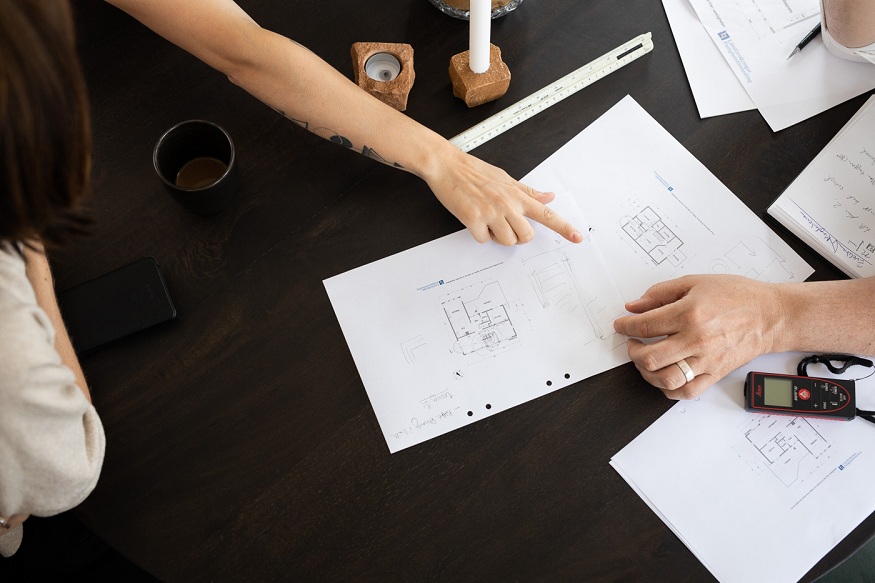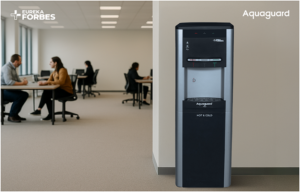What Is Bygglov?
Definition of Bygglov
Bygglov, a Swedish term for “building permit,” is a legal requirement in Sweden for constructing, altering, or demolishing buildings and structures. It is issued by the local municipality (kommun) and serves as a way to ensure that construction activities align with zoning regulations, building codes, and environmental considerations. The purpose of bygglov is to maintain orderly urban and rural development, ensuring that new buildings or changes to existing structures fit harmoniously into their surroundings.
Importance of Bygglov in Sweden
The concept of bygglov is central to urban planning and community development in Sweden. It aims to preserve architectural heritage, ensure safety, and promote sustainable construction. By regulating what can be built, where, and how, bygglov helps maintain the character of neighborhoods, protect natural landscapes, and ensure public safety through adherence to structural and safety standards.
When Is Bygglov Required?
Types of Projects Requiring Bygglov
Not all construction projects require a bygglov, but many do. Here are the common scenarios where bygglov is needed:
- New Construction: Any new building, whether residential, commercial, or industrial, typically requires bygglov.
- Extensions and Additions: Expanding an existing building, such as adding rooms, balconies, or extra floors, often requires a permit.
- Facade Changes: Alterations to the exterior appearance of a building, like changing windows, doors, or roofing materials, may need approval.
- Change of Building Use: Changing the function of a building, such as converting a warehouse into apartments, also requires bygglov.
- Outdoor Structures: Erecting structures like garages, sheds, or larger fences might need a permit depending on their size and location.
Exemptions from Bygglov
Certain minor projects are exempt from bygglov to simplify the process for property owners. These typically include:
- Small Sheds: In many cases, building a small shed (friggebod) under a certain size (usually around 15 square meters) does not require a permit.
- Greenhouses: Small greenhouses might be exempt, provided they do not significantly alter the landscape.
- Interior Renovations: Interior changes that do not affect the structural integrity of a building generally do not require bygglov. However, even if a project is exempt from bygglov, it may still require a notification (anmälan) to the local authorities.
The Bygglov Application Process
Steps to Apply for Bygglov
Applying for a bygglov involves several steps, and the process can vary slightly between municipalities. Here is a general outline of the procedure:
- Preliminary Consultation: It is advisable to consult with the municipality before starting the application. This helps to understand the local zoning rules and whether the project requires a bygglov.
- Prepare Required Documents: Gather detailed drawings of the proposed construction, including floor plans, elevations, and site plans. A description of materials and colors may also be required.
- Submit Application: Submit the application form along with the required documents to the local building committee (byggnadsnämnden).
- Review Process: The committee will review the application to ensure compliance with building codes and zoning regulations. They may ask for additional information or modifications.
- Decision Issued: The municipality will make a decision, which can either approve or deny the bygglov. The decision typically comes with conditions that must be followed during construction.
- Appeals: If the bygglov is denied, the applicant can appeal the decision to a higher authority.
Time Frame for Bygglov Approval
The approval process can take anywhere from a few weeks to several months, depending on the complexity of the project and the municipality’s workload. It is recommended to apply well in advance to avoid delays, especially for larger projects.
Cost of Bygglov
Factors Influencing the Cost
The cost of obtaining a bygglov varies significantly depending on several factors, including:
- Type of Project: Larger and more complex projects typically incur higher fees.
- Location: Municipalities may have different fee structures. Building permits in urban areas may be more expensive than in rural areas.
- Size of the Construction: The size of the building or extension can affect the application fee, as more detailed reviews are required for larger projects.
Average Cost Estimates
On average, the fee for a bygglov can range from a few thousand Swedish kronor (SEK) for small projects like minor extensions to tens of thousands of SEK for larger developments. It is crucial to check with the local municipality for specific rates and potential additional fees for consultations and inspections.
Common Challenges in Obtaining Bygglov
Issues with Zoning and Planning Regulations
Zoning regulations (detaljplan) play a significant role in the bygglov process. If a proposed project does not align with the zoning plan of the area, the application can be delayed or denied. Adjusting the project to fit the zoning requirements can be a time-consuming process.
Incomplete or Incorrect Documentation
One of the most common reasons for delays in the bygglov process is the submission of incomplete or incorrect documents. Accurate architectural drawings and clear project descriptions are essential for a smooth approval process. Working with professional architects or engineers can help avoid such issues.
Environmental Considerations
In areas with significant natural landscapes or environmental value, the bygglov process may include an assessment of the potential environmental impact. Projects near water bodies, forests, or protected areas often face stricter regulations.
How to Appeal a Bygglov Decision
Grounds for Appeal
If a bygglov application is denied, the decision can be appealed to the County Administrative Board (Länsstyrelsen). Grounds for appeal may include:
- Misinterpretation of Regulations: If the applicant believes that the building committee has incorrectly interpreted zoning or building regulations.
- Unfair Conditions: If the conditions attached to the approval are deemed unreasonable or overly restrictive.
Steps in the Appeal Process
- Submit Appeal: The appeal must be submitted in writing to the local building committee within three weeks of receiving the decision.
- Review by County Administrative Board: The board will review the appeal and either uphold or overturn the decision.
- Further Appeals: If the decision is still unsatisfactory, it can be further appealed to the Land and Environmental Court (Mark- och miljödomstolen).
Role of Architects and Engineers in Bygglov
Importance of Professional Assistance
Architects and engineers play a crucial role in the bygglov process. They can ensure that building plans meet local requirements, assist in preparing detailed drawings, and advise on zoning issues. Hiring a professional can streamline the application process and reduce the risk of errors.
Choosing the Right Professional
When selecting an architect or engineer for a bygglov project, it is essential to:
- Check Credentials: Ensure that the professional is registered with relevant bodies in Sweden.
- Experience with Local Regulations: An architect familiar with local municipal regulations can provide valuable insights.
- Portfolio Review: Reviewing past projects can help assess the professional’s ability to handle similar projects.
Bygglov in Urban vs. Rural Areas
Differences in Regulations
Urban and rural areas in Sweden have different approaches to bygglov due to variations in population density, environmental considerations, and development goals.
- Urban Areas: Regulations tend to be stricter due to the dense population and the need to preserve cityscapes. Projects in urban areas often require detailed architectural considerations.
- Rural Areas: While rural areas have more flexibility in terms of design and space, projects that impact natural landscapes or historical sites may face stricter scrutiny.
Benefits of Bygglov in Urban Planning
Bygglov serves as a tool for urban planners to shape the growth of cities and towns. It ensures that new developments align with the overall aesthetic and functional vision of a community, helping to avoid chaotic construction and maintain a cohesive city structure.
Digital Transformation in Bygglov Applications
Online Application Systems
Many municipalities in Sweden have adopted digital platforms for bygglov applications. This allows applicants to submit documents, track their application status, and communicate with municipal officials online. The digitalization of the bygglov process has made it more efficient and transparent.
Benefits of Digital Bygglov
- Time-Saving: Online submissions reduce the time spent on manual paperwork.
- Transparency: Applicants can easily monitor the progress of their application.
- Access to Information: Digital platforms often include resources like zoning maps and guides, making it easier for applicants to understand the requirements.
Bygglov and Sustainable Construction
Promoting Green Building Practices
The bygglov process can encourage sustainable building practices by setting standards for energy efficiency, use of renewable materials, and reduction of environmental impact. Projects that incorporate solar panels, green roofs, or other eco-friendly features may receive support from municipalities.
Compliance with Environmental Regulations
Swedish building regulations often include requirements for energy efficiency and environmental impact assessments, especially for larger projects. Complying with these regulations during the bygglov process contributes to Sweden’s goals for sustainable urban development.
Future Trends in Bygglov
Streamlining the Bygglov Process
Efforts are underway to further streamline the bygglov process in Sweden. This includes reducing the time for permit approvals, simplifying requirements for smaller projects, and enhancing digital tools for applications. These changes aim to make it easier for property owners to carry out renovations and new constructions while still maintaining regulatory oversight.
Impact of Climate Change on Bygglov
With the increasing impact of climate change, the bygglov process is likely to become more focused on resilience and adaptation. This includes assessing risks such as flooding or extreme weather conditions during the planning phase of construction projects. Municipalities may place more emphasis on sustainable building designs that can withstand changing environmental conditions.
Conclusion
a critical aspect of construction and development in Sweden, balancing the needs of property owners with community interests and environmental considerations. Understanding the process, requirements, and challenges of obtaining a bygglov is essential for anyone looking to undertake a building project in the country. As Sweden continues to focus on sustainable growth and urban development, the role of bygglov in shaping the built environment will remain vital.




